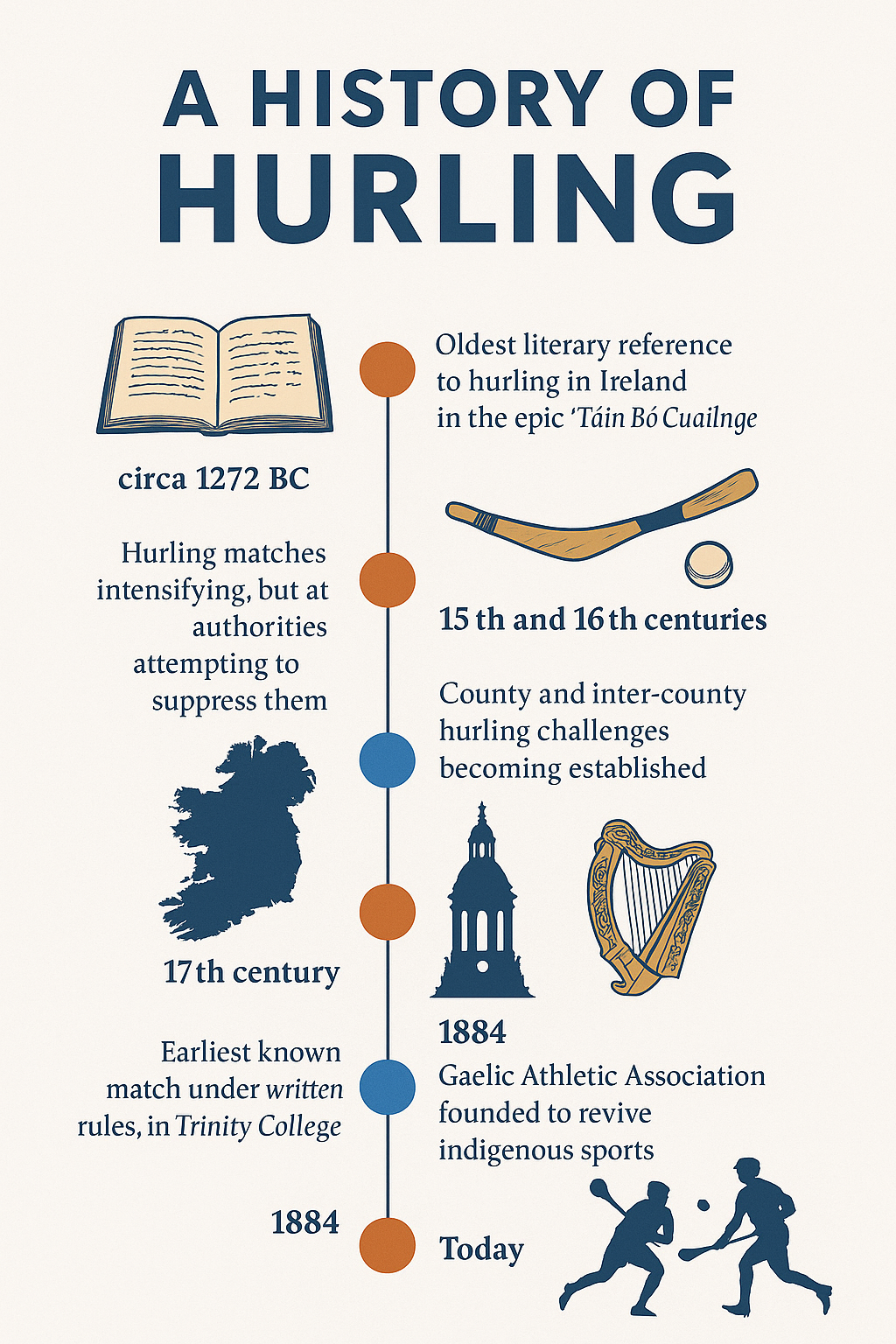
The Wild Roots and Modern Evolution of Hurling
Share
The Wild Roots and Modern Evolution of Hurling
Hurling is one of the oldest and fastest field sports in the world, with roots stretching back over 3,000 years. Its first literary mention dates as far back as 1272 BC, but even long before it hit the page, hurling was played across Ireland in a wild and unregulated form, a tribal expression of skill, strength, and speed.
Hurling in Irish Myth and Legend
No other sport is as deeply woven into the mythology of a nation. One of the earliest and most iconic tales of hurling appears in Táin Bó Cuailnge, where the hero Cú Chulainn earns his name by slaying a savage guard dog with nothing more than a hurl and sliotar. These stories don’t just reference hurling—they celebrate it as a form of martial training, equating ability on the field with prowess in battle.
From Brehon Laws to Bans
Throughout rural Ireland, hurling grew as a fierce and untamed game. A 17th-century account describes matches being played across 200–300 yard plains, with the first team to drive the ball through the opposing goal claiming victory. So prevalent was the game that the ancient Brehon Laws included specific rules for compensation in the case of hurling-related injuries—even fatalities.
Despite a 12th-century ban on hurling by the Norman authorities, the sport survived and even thrived under the patronage of landlords. By the 1850s, hurling had re-emerged from strongholds across the country, with matches reported in counties like Munster, Donegal, Down, Longford, and Kilkenny.
Many Games, One Name
Ireland's rich landscape of stick-and-ball games varied by region. There was scuaib in Clare and South Galway, camán (later anglicized to “commons”) in Ulster, and iomán in South Galway played under the Killimor Daly rules. In Tipperary, James Maher’s local rules also shaped a distinct version before the famine.
By the 19th century, a new and somewhat unfamiliar version of “hurley” began appearing in Dublin’s upper-class circles. Played on manicured lawns and led by groups like the Irish Hurley Union in Trinity College, it resembled more of a gentleman’s pastime than the rugged folk sport it originated from.
The Birth of the Association
Enter Michael Cusack, a Clareman with a vision. In 1882, Cusack began writing about the revival of native Irish games. Just two years later, the association was founded. This new body formalized the rules and restored traditional hurling to its rightful place in Irish life.
With standardized rules and growing public interest, hurling flourished. It became a defining aspect of Irish identity and pride, taught in schools and played in parishes from Cork to Antrim.
The Modern Game
Today’s hurling has evolved in response to new athletic standards and tactical innovations. Players are faster, stronger, and more strategic than ever. Movement into space, ball retention, and precise passing now define the game as much as raw skill or bravery.
Yet the essence remains. The clash for possession, the thunderous roar of a crowd, and the pursuit of victory echo back to ancient fields where hurling was played with grit and passion.
Looking Outward
Hurling hasn’t just stayed at home. In international tests against Scottish shinty players, a hybrid form of the game lets athletes represent Ireland under “compromise” rules. These matchups are a unique chance to share our national sport on a global stage while keeping its spirit alive.
From Myth to Modern Day
Hurling is more than a sport—it's a story. A tale of survival, evolution, and identity. At Hurling Holder, we honour that legacy not just in the products we create, but in the pride we share for a game that belongs to every townland, county, and generation.